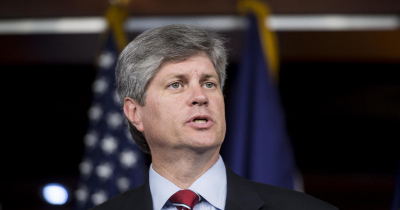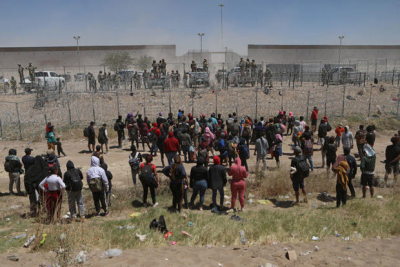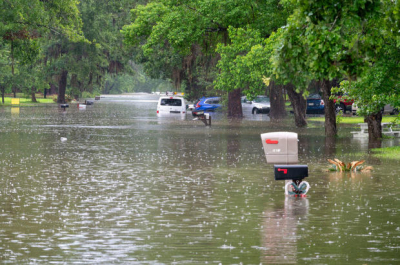
Fiery Interruption: Sriracha Sensation Pauses Production – Unveiling the Reasons Behind
Monday, 13 May 2024

In its latest "State of the Air" report, the American Lung Association delivers a sobering message: nearly 39% of Americans reside in regions where air pollution levels pose significant health risks. This figure represents a marked increase from previous years, underscoring the alarming trajectory of air quality degradation across the nation. Compiled from EPA data spanning 2020 to 2022, the report paints a troubling picture of approximately 131 million Americans breathing unhealthy air during this timeframe alone—a startling 10% surge compared to the prior year's findings.
Since its inception in 2000, the American Lung Association has been steadfast in its mission to illuminate the air quality landscape annually. However, the stark rise in the number of individuals exposed to hazardous pollutants signals a pressing need for intensified efforts in safeguarding public health. Particularly concerning is the disproportionate burden borne by communities of color—a longstanding issue that demands urgent attention and systemic reform.
Despite significant strides since the enactment of the Clean Air Act in 1970, the battle for clean air is far from won. While emissions of the six primary air pollutants have declined substantially, the specter of climate change looms large, exacerbating air quality challenges. Escalating temperatures, prolonged droughts, and rampant wildfires have unleashed a new wave of environmental hazards, rendering air quality management an increasingly complex endeavor.
The report underscores the perilous intersection of climate change and air pollution, citing the correlation between extreme weather events and spikes in particle pollution and ozone levels. These hazardous conditions pose a grave risk to public health, compounding the ongoing efforts of states and cities nationwide to mitigate air pollution.
Examining two key categories of pollutants—fine particles and ozone—the report delineates both short-term fluctuations and long-term trends. Fine particles, emitted from various sources including combustion and chemical reactions, pose immediate health threats, while ozone, generated through atmospheric interactions, presents a persistent challenge exacerbated by climatic shifts.
In essence, the latest "State of the Air" report serves as a clarion call for concerted action to address the escalating crisis of air pollution. As communities grapple with the intersecting challenges of climate change and environmental justice, urgent measures are imperative to safeguard the health and well-being of all Americans.
The latest report from the American Lung Association offers a stark revelation: the worsening state of air quality across U.S. cities. Drawing data from 2020 to 2022, the Association's assessment focused on daily particle pollution, annual particle pollution, and ozone levels, highlighting areas where air quality breaches accepted health standards.
Cities across the nation faced damning grades as persistent poor air quality readings pushed them beyond acceptable thresholds on the Air Quality Index. Exposure to particulate matter emerged as a significant concern, with health officials warning of its potential to instigate or exacerbate respiratory and cardiovascular ailments.
Alarmingly, the three-year period witnessed a concerning uptick in days categorized as "very unhealthy" or "hazardous" due to particle pollution, compared to previous years. A staggering 135 days were flagged as "very unhealthy," with an additional 79 marked as "hazardous," impacting 58 counties and approximately 32 million individuals across 10 states.
Utilizing an updated baseline standard endorsed by the EPA, this year's findings underscored the severity of the situation, revealing that over 90 million Americans were residing in 119 counties plagued by failing grades for year-round particle pollution levels.
Topping the list of cities grappling with daily and year-round particle pollution was Bakersfield, California, maintaining its ignominious position from the previous year's report. Renowned for its industrial activities encompassing agriculture, mining, and oil refineries, Bakersfield has endured the dubious distinction of being the worst-hit city for year-round particle pollution for five consecutive years.
The prevalence of cities affected by droughts and wildfires was conspicuous, with California bearing the brunt, along with Nevada, Oregon, and Washington. However, even locales less afflicted by these environmental factors, such as Pittsburgh, were not spared from the scourge of poor air quality. Pittsburgh, ranking 19th on the list for year-round particle pollution, garnered failing grades for both daily particle pollution and ozone levels.
In essence, the report serves as a clarion call for concerted efforts to combat air pollution and mitigate its detrimental health effects. As communities grapple with the multifaceted challenges posed by environmental degradation, urgent action is imperative to safeguard public health and ensure a sustainable future for all.
Kevin Stewart, the environmental health director at the American Lung Association, reflected on the organization's quarter-century journey with the "State of the Air" report, noting remarkable strides in improving the nation's air quality. However, he lamented that over 131 million individuals still reside in areas plagued by unhealthy air pollution levels, with the Pittsburgh Metro Area singled out as one of the worst offenders for particle pollution.
Joining Pittsburgh on the roster of cities grappling with severe particle pollution are Indianapolis, Detroit, Houston, Kansas City, Cincinnati, Chicago, Oklahoma City, Augusta in Georgia, and Corpus Christi in Texas. The detrimental effects of ozone, while beneficial in the upper atmosphere, pose significant risks closer to the ground, triggering respiratory ailments and compromising lung health. Experts emphasize that prolonged exposure to elevated ozone concentrations can heighten vulnerability to respiratory infections.
Despite progress in curbing ozone levels over the past two decades, with a notable shift away from coal-fired power plants to cleaner energy sources, approximately 100 million people across 26 states still reside in regions where ozone levels fail to meet air quality standards. Climate change-induced factors like extreme heat, dwindling precipitation, and rampant wildfires have posed formidable challenges to emission reduction efforts, particularly in western states.
Los Angeles, infamous for its smog-laden skies dominated by ozone, retained its unenviable title as the nation's worst city for ozone pollution, a dubious distinction it has held in nearly every "State of the Air" report. Following Los Angeles, other cities grappling with ozone pollution include:
Among the 25 worst metropolitan areas for ozone pollution, California commands a staggering 10 spots, with an additional 12 distributed among six states: Arizona, Colorado, Nevada, New Mexico, Texas, and Utah. Only three cities from the eastern U.S. managed to secure spots on the list, namely New York, Chicago, and Grand Rapids in Michigan.
As the fight for cleaner air continues, the insights gleaned from the "State of the Air" report underscore the urgent need for concerted action to safeguard public health and mitigate the far-reaching impacts of air pollution.
In conclusion, the findings from the American Lung Association's "State of the Air" report offer both cause for celebration and sobering reminders of the challenges ahead. While significant progress has been made in improving air quality over the past 25 years, millions of Americans still grapple with the adverse effects of air pollution, particularly in regions where particle pollution and ozone levels exceed health standards.
The report underscores the critical need for continued efforts to combat air pollution, from transitioning to cleaner energy sources to implementing stringent emissions controls. Climate change exacerbates these challenges, with extreme weather events and wildfires posing additional hurdles to achieving clean air goals.
As we confront these complex environmental and public health issues, it is imperative for policymakers, industries, and communities to work collaboratively towards sustainable solutions. By prioritizing clean air initiatives and adopting proactive measures, we can ensure a healthier future for all and mitigate the detrimental impacts of air pollution on human health and the environment.




